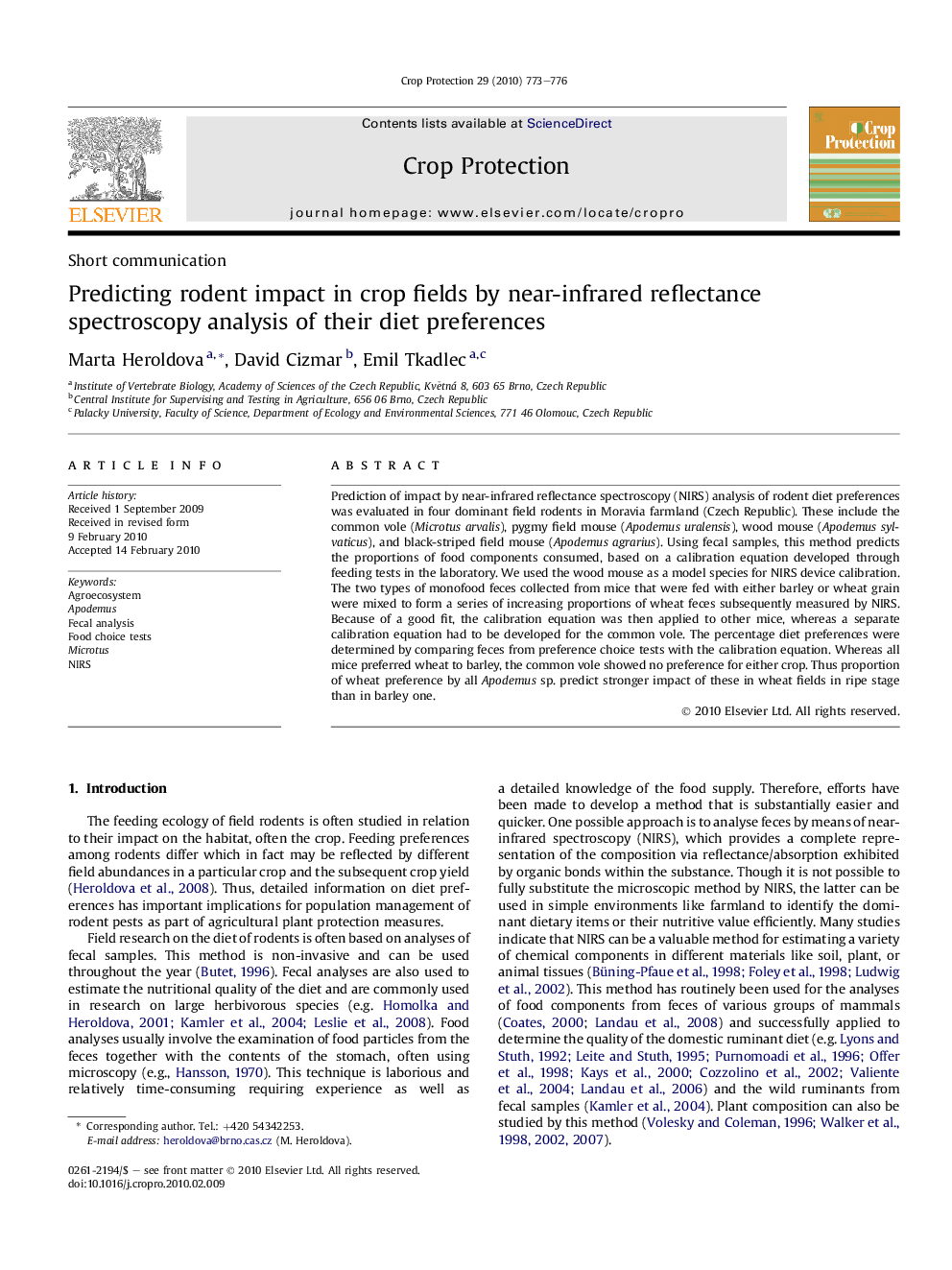| Article ID | Journal | Published Year | Pages | File Type |
|---|---|---|---|---|
| 4506804 | Crop Protection | 2010 | 4 Pages |
Prediction of impact by near-infrared reflectance spectroscopy (NIRS) analysis of rodent diet preferences was evaluated in four dominant field rodents in Moravia farmland (Czech Republic). These include the common vole (Microtus arvalis), pygmy field mouse (Apodemus uralensis), wood mouse (Apodemus sylvaticus), and black-striped field mouse (Apodemus agrarius). Using fecal samples, this method predicts the proportions of food components consumed, based on a calibration equation developed through feeding tests in the laboratory. We used the wood mouse as a model species for NIRS device calibration. The two types of monofood feces collected from mice that were fed with either barley or wheat grain were mixed to form a series of increasing proportions of wheat feces subsequently measured by NIRS. Because of a good fit, the calibration equation was then applied to other mice, whereas a separate calibration equation had to be developed for the common vole. The percentage diet preferences were determined by comparing feces from preference choice tests with the calibration equation. Whereas all mice preferred wheat to barley, the common vole showed no preference for either crop. Thus proportion of wheat preference by all Apodemus sp. predict stronger impact of these in wheat fields in ripe stage than in barley one.
